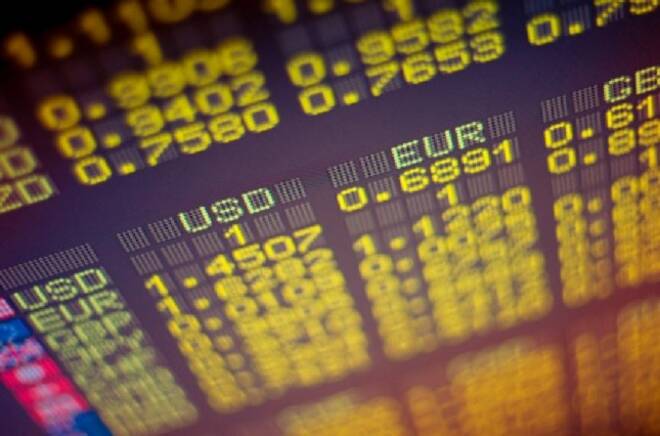Advertisement
Advertisement
EUR/USD Daily Technical Analysis for December 18, 2017
By:
Weak Trade Data Weighs on Euro
The EUR/USD traded under pressure on Friday slumping on softer than expected exports out of the Eurozone which buoyed the greenback. ECB speak continues to show that several members excluding Draghi believe that quantitative easing will end by September 2018. The Bundesbank sees strong growth on the horizon, and also are calling for an end to stimulus.
Technicals
The EUR/USD edged lower slipping through support which is now short-term resistance near the 10-day moving average near 1.1793. Support is seen near the November lows at 1.1553. Momentum remains negative as the MACD (moving average convergence divergence) histogram prints near in the black with a downward sloping trajectory which points to a lower exchange rate.
Eurozone trade surplus narrows as exports drop
The Eurozone posted a trade surplus of EUR 19.0 billion in October, down from EUR 24.5 billion in the previous month, as exports dropped back to EUR 180.6 billion from EUR 185.0 billion, while nominal imports picked up. The unadjusted numbers showed a surplus of EUR 18.9 billion, down from EUR 19.2 billion in October last year, with accumulated data from January to October indicating a surplus of EUR 187.9 billion, down from EUR 213.8 billion in the first 10 months last year. This is nominal data, impacted by developments in energy prices and exchange rate developments, and these are still healthy surpluses and less of a sign that growth is slowing down, but that the recovery is broadly balanced and not reliant on trade, as especially German recoveries tend to be in the past.
ECB’s Vasiliauskas questions need for QE beyond Sep 2018
While Draghi tried his best to give the impression of a united council that is backing the open-ended feature of the QE program and to suggest that the future beyond September next year is open, council member Vasiliauskas took a different tack saying that with the economy reaching potential next year the ECB will have to decide on the future of QE adding that “it is likely that the economy won’t require any additional support”. Clearly whatever the impression Draghi is trying to convey the number of those that expect QE to end in September next year, or at least be quickly phased out after that is on the rise and Draghi seems to be falling not only behind markets but also council members.
ECB’s Nowotny forecasts the Right Direction on Inflation
ECB’s Nowotny forecasts show “the right developments” on inflation or as the ECB calls it a “sustained adjustment”. Especially for core inflation, which is the more important point, according to Nowotny, as “no central bank in the world can influence oil prices”. A bit of a different message than Draghi’s insistence yesterday that inflation isn’t there yet, highlighting that council views are not quite as united as Draghi seemed to imply.
The Bundesbank Sees Strong Wage Growth
Bundesbank sees bottlenecks and strong wage growth. After Vasiliauskas, the Bundesbank added to signs that Draghi’s picture of peace on the council is pretty much an illusion it lifted its growth projections for Germany, saying that the economy is reaching an increasingly mature state. The Bundesbank sees persistently high underlying growth, increasing bottlenecks and a perceptible pick up in wages, which seems to fly in the face of Draghi’s insistence that wage growth in particular remains too low. True, Draghi is talking about the Eurozone as a whole, but Weidmann is already on record as calling for a quick end to QE and with the new growth projections putting German GDP growth at a whopping 2.7% this year, 2.5% in 2018 and 1.7% in 2019 the German business cycle is very clearly out of synch with the ECB’s policy cycle.
About the Author
David Beckerauthor
David Becker focuses his attention on various consulting and portfolio management activities at Fortuity LLC, where he currently provides oversight for a multimillion-dollar portfolio consisting of commodities, debt, equities, real estate, and more.
Did you find this article useful?
Latest news and analysis
Advertisement
